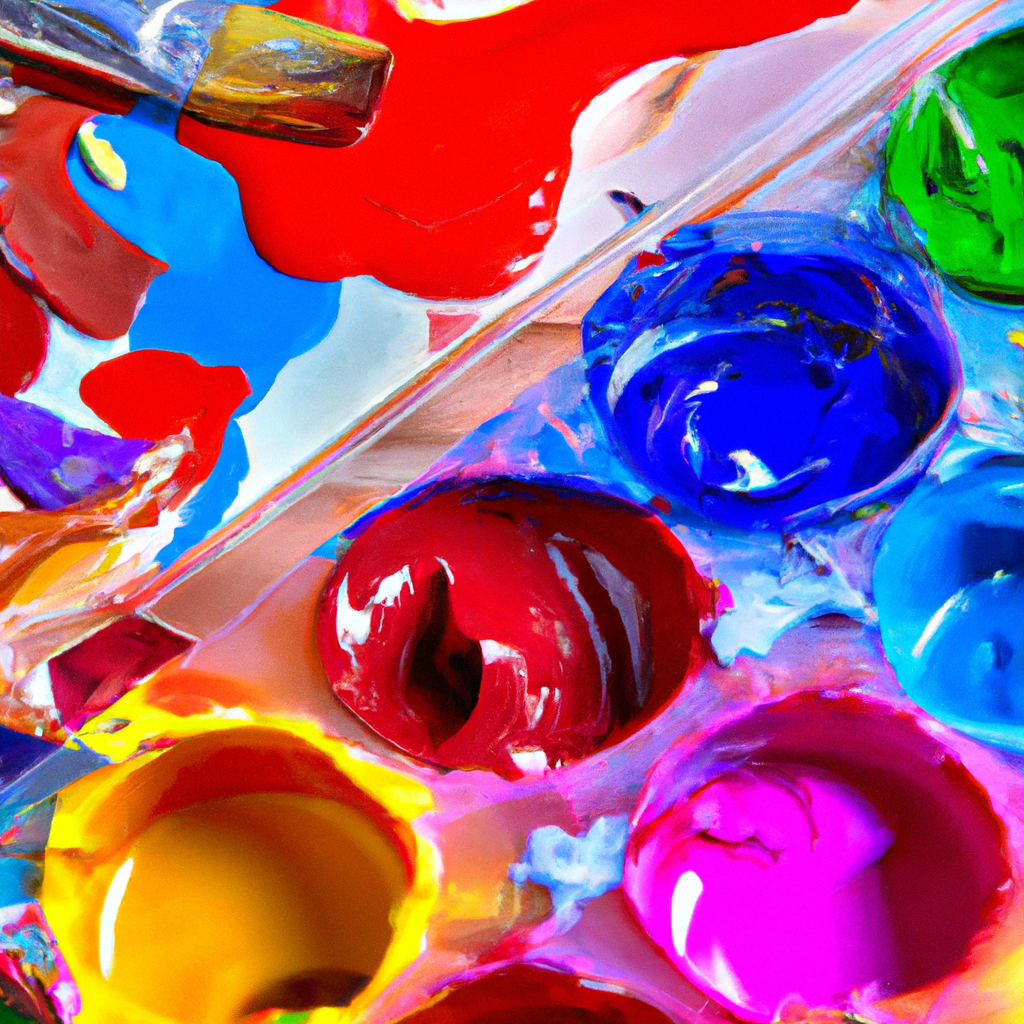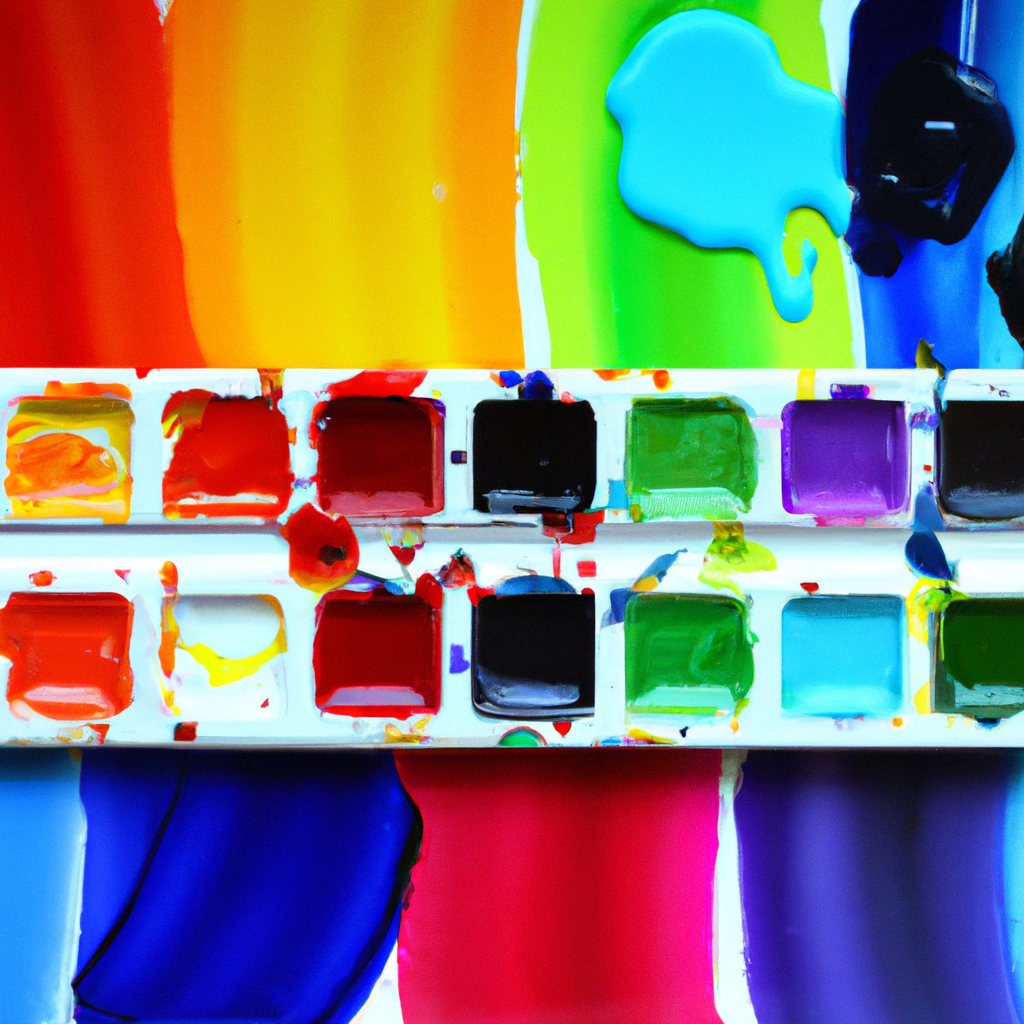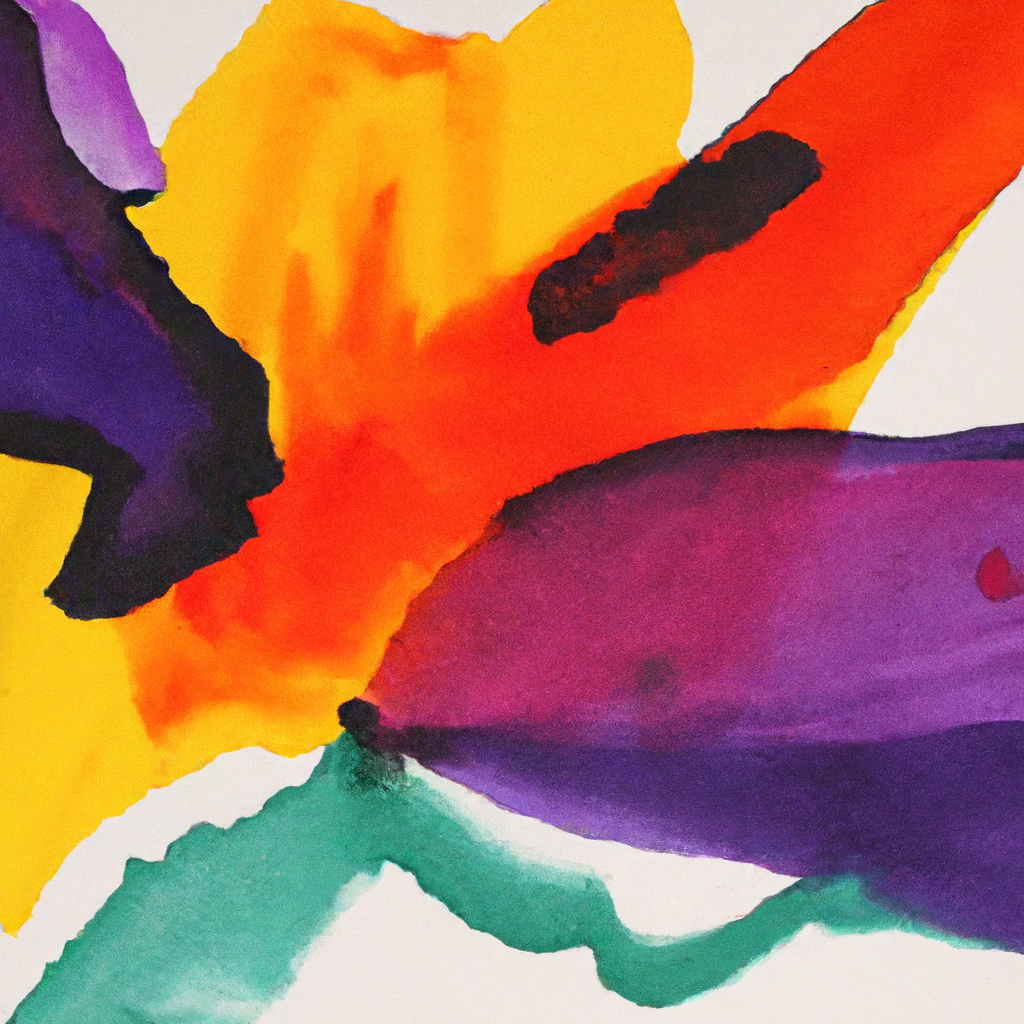In order to achieve optimal results with gouache paint, it is essential to understand the proper way to set it. From selecting the right materials to preparing your workspace, this article will guide you through the key steps to ensure a seamless painting experience. By following these expert recommendations, you will be able to unleash your creativity and create vibrant, professional-looking artwork that truly stands out.
How To Set Gouache Paint
Gouache paint is a versatile medium that can add depth and vibrancy to your artwork. Whether you are a beginner or an experienced artist, properly setting up your gouache paint is essential to achieve the desired results in your artwork. In this comprehensive guide, we will take you through the step-by-step process of setting up your gouache paint, from preparing your workspace to cleaning up. By following these guidelines, you will be able to maximize the potential of your gouache paint and create stunning pieces of art.

This image is property of images.unsplash.com.
Preparing Your Workspace
Before you begin setting up your gouache paint, it is important to prepare your workspace. Choose a well-lit area that is free from distractions and provides ample space for all your materials. A clean and organized workspace will enable you to work more efficiently and ensure that your gouache paint remains in pristine condition.
Choosing the Right Materials
To set up your gouache paint, you will need a few essential materials. First and foremost, you will need a set of quality gouache paints. Look for paints that have a good level of opacity and vibrant colors. Additionally, you will need a variety of paintbrushes, watercolor paper or canvas boards, and a palette to mix your colors. It is also recommended to have a spray bottle filled with water and a rag or paper towels for clean-up purposes.
Setting Up Your Palette
When setting up your palette for gouache painting, it is important to consider the type of palette you prefer. There are two main options: a traditional palette or a stay-wet palette. A traditional palette consists of a flat surface where you can squeeze out your gouache paints and mix your colors. On the other hand, a stay-wet palette has a special membrane that keeps the paints moist for longer periods of time, allowing you to work with them for extended periods without worrying about them drying out.
Once you have chosen your preferred palette, arrange your gouache paints in a logical order. Organizing them according to the color spectrum, from light to dark or warm to cool, can make it easier to select and mix colors as you work.
Preparing the Paints
Before you start painting, it is important to prepare your gouache paints. Gouache paints have a thicker consistency compared to watercolors, so they often require a small amount of water to achieve the desired consistency. Squeeze a small amount of each color onto your palette and add a few drops of water to each color. Use a palette knife or a brush to mix the water with the paint until you reach a smooth and even consistency. This step is crucial as it ensures that your paints are ready to be used and will flow smoothly on your chosen surface.

This image is property of images.unsplash.com.
Mixing Colors
One of the benefits of working with gouache paint is the ability to mix colors to create new shades and tones. To mix colors effectively, start with a small amount of the primary color on your palette and gradually add small increments of the secondary color. Use a palette knife or a brush to mix the colors together until you achieve the desired hue. Remember to clean your brush thoroughly between each color mix to avoid contaminating your palette with unwanted colors.
Using Water and Mediums
Water plays an important role in gouache painting. It can be used to thin down the paints for more transparent effects or to create textured surfaces by adding less water. Experimentation is key to finding the right balance of water to achieve the desired consistency for your artwork.
In addition to water, you can also use mediums to enhance the characteristics of your gouache paint. Gouache mediums can be used to increase the flow of the paint, extend drying time, or add a glossy or matte finish. Be sure to read the instructions provided with the gouache mediums and experiment with different ratios to achieve the desired effects.
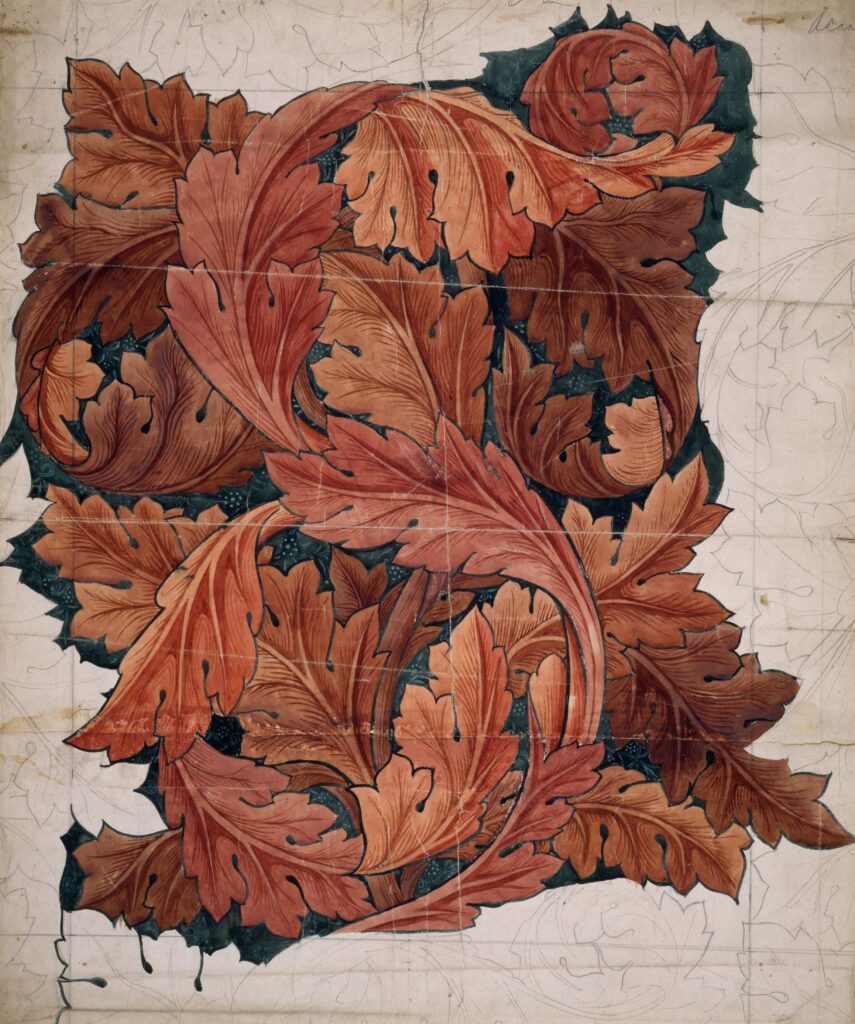
This image is property of images.unsplash.com.
Organizing Your Workspace
Maintaining an organized workspace is crucial when working with gouache paint. Arrange your materials in a way that allows for easy access and workflow. Keep your brushes clean and organized by using brush holders or containers. Arrange your paint tubes or pans in a way that allows you to easily identify and reach for the colors you need. By keeping your workspace organized, you can focus more on your artwork and minimize the time spent searching for materials.
Storing Your Gouache Paints
Properly storing your gouache paints is important to ensure their longevity and prevent them from drying out. If you are working with tubes, make sure to tightly seal them after each use to prevent air from entering and drying out the paint. For palettes, cover them with a piece of plastic wrap or store them in an airtight container to keep the paints moist for an extended period. It is also recommended to store your gouache paints in a cool and dry place to avoid any potential damage due to extreme temperature or humidity.
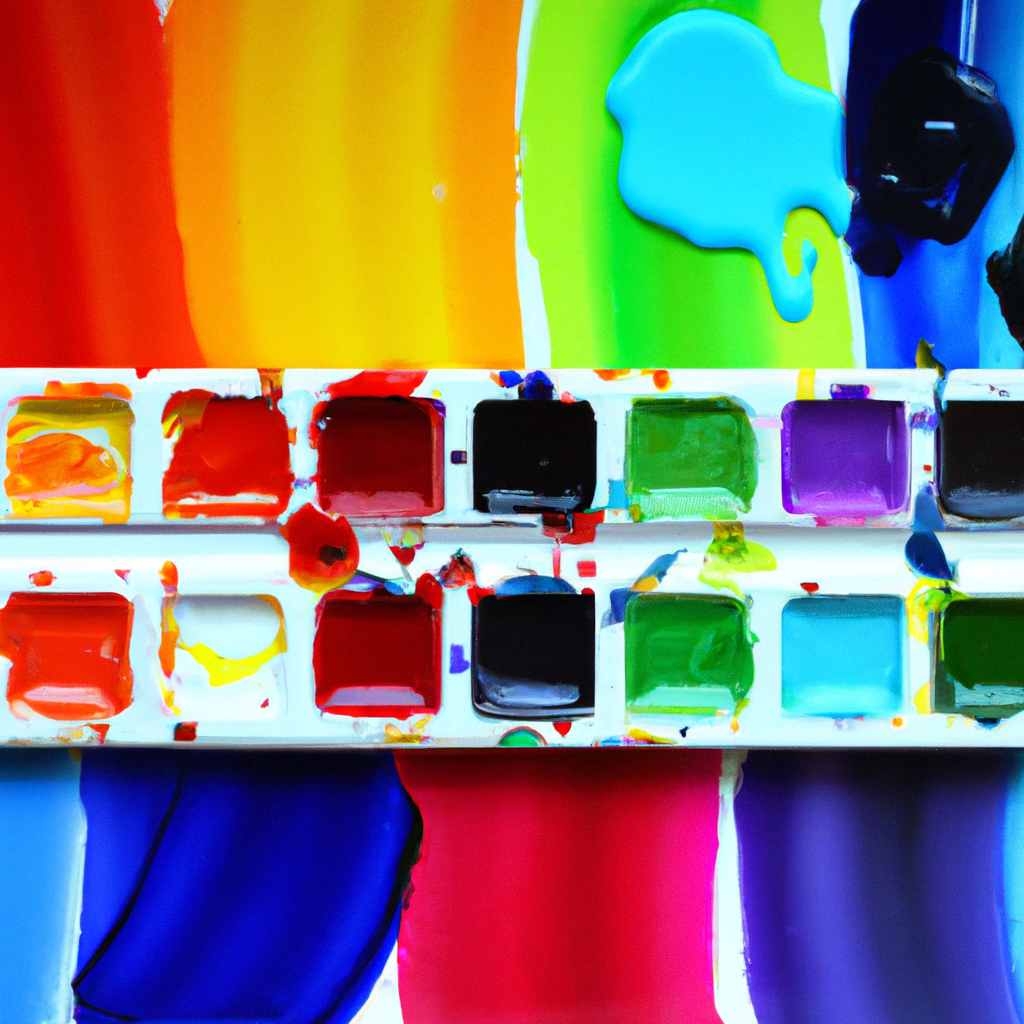
Maintaining Your Tools and Materials
Regular maintenance of your tools and materials is essential to prolong their lifespan and ensure the quality of your artwork. Clean your brushes thoroughly after each painting session to remove any leftover paint and prevent them from hardening. For watercolor paper or canvas boards, store them in a flat and dry place to avoid warping or damage. Take the time to inspect your paints, brushes, and other materials regularly to identify any signs of wear or damage. By maintaining your tools and materials, you can enjoy working with gouache paint for a longer period and produce high-quality artworks.
Cleaning Up
Cleaning up after a gouache painting session is an important step in the process. Take the time to clean your palette, brushes, and any other tools to remove any leftover paint. Use a damp rag or paper towel to wipe down your workspace, removing any spills or stains. Properly dispose of any waste materials according to your local regulations. By maintaining a clean and organized workspace, you can start your next painting session with a fresh and clutter-free environment.
In conclusion, setting up your gouache paint is a crucial step in the artistic process. By preparing your workspace, choosing the right materials, setting up your palette, and properly preparing and mixing colors, you can achieve the best results in your artwork. Additionally, utilizing water and mediums effectively, organizing your workspace, storing your gouache paints properly, maintaining your tools and materials, and cleaning up will help you create stunning pieces of art while ensuring the longevity of your materials. Follow these comprehensive guidelines, and you will be well on your way to mastering the art of gouache painting.
